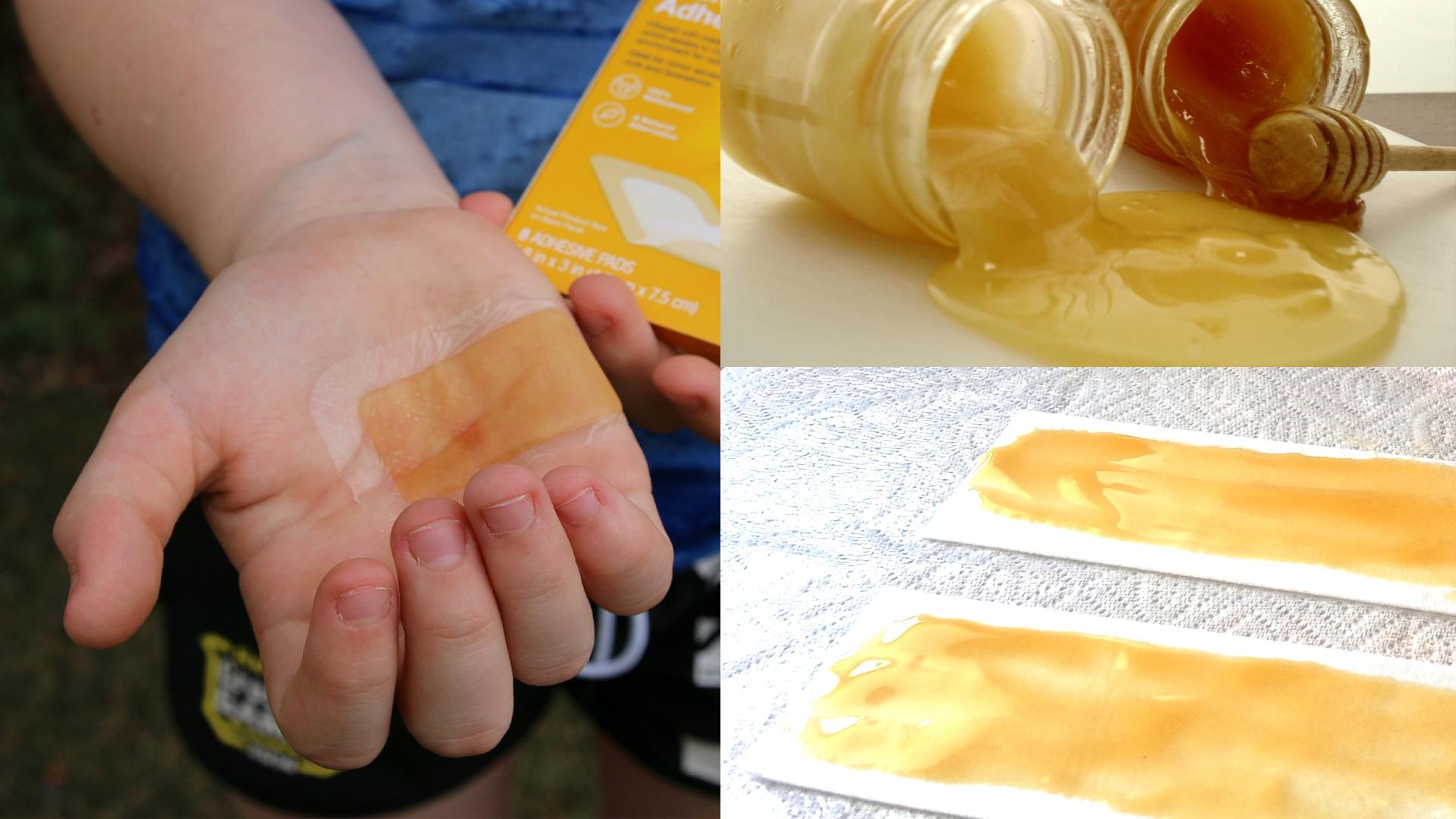Spread on toast, as a sweetener in drinks, or in a spoon straight from the jar: these are the things most people think of when they hear the words Mānuka honey. But this golden natural elixir has a far more important use that’s become commonplace in hospitals and health clinics around the world. Thanks to its potent antibacterial and anti-inflammatory properties, New Zealand Mānuka honey is used to aid wound healing, naturally.
This isn’t a new discovery. In New Zealand, the leaves and bark of the unique and indigenous Mānuka tree have been used for healing by Māori for 1000 years. And honey has been used in wound care all over the world for millennia. What has changed in the last two centuries, thanks to the introduction of European bees, is the serendipitous creation of New Zealand Mānuka honey. It brings the healing properties of the tree and the honey together, into the most potent and genetically unique combination.
Mānuka honey’s role as a natural wound healer is well established. Its potent antibacterial activity can be attributed to a unique combination of chemical compounds, Methylglyoxal (MGO). MGO has been shown to effectively tackle a broad spectrum of bacteria, including antibiotic-resistant strains like MRSA. Also unique to Mānuka honey is Leptosperin, which enters the bloodstream and has been shown to deliver an anti-inflammatory action. In combination with honey’s well known antioxidant action, wound grade Mānuka honey creates a unique healing environment where the body can resume its natural healing function in chronic wounds.
In simple terms, MGO reduces the bacterial burden in a wound, preventing infection and allowing the body to regenerate tissue more easily. At the same time, Leptosperin reduces inflammation, one of the key reasons wounds take time to heal, are painful and leave scars. Studies have shown that these antibacterial and anti-inflammatory properties can be beneficial in treating burns, ulcers, and even surgical wounds, suggesting its potential to aid faster healing and reduce scarring.
Of course, you shouldn’t be using any old honey for wound care. There is an ever-increasing number of products available, from Mānuka honey-infused bandages for home use through to medical grade dressings used in hospitals worldwide.
What the best products have in common is that they use New Zealand Mānuka honey. Why does this matter? Because the tree they originate from is completely unique, Mānuka honey is unequalled by any honey around the world, and the products produced from it are underpinned by 40 years of health research. New Zealand also provides assurance around quality and potency, so you know what you’re getting is fit for purpose.
Like any matters relating to healthcare, it’s always best to consult with a medical or health professional before trying a new form of treatment. They will have reviewed the extensive research that’s been done into the benefits of New Zealand’s uniquely healthy Mānuka honey and can advise you on how best to use it.
Medical science is constantly exploring new ways to heal. What makes the research into Mānuka honey so exciting is that it’s a 100% natural product with proven benefits. And after 40 years of scientific studies, we’ve only just begun to unlock its potential.
Important research papers:
- Gethin, G., & Cowman, S. (2005). Case series of use of Mānuka honey in leg ulceration. International Wound Journal, 2(1), 10-15. This early study showed promising results for Mānuka honey in reducing the size and odor of superficial leg ulcers.
- Mullen, W. P., & Buckle, K. E. (2010). Antibacterial activity of honey against clinically relevant wound bacteria. Wound Repair and Regeneration, 18(5), 756-763. This research investigated the broad-spectrum antibacterial properties of Mānuka honey against wound-related bacteria, including MRSA.
- Cooper, R. A., Molan, P. C., & Burton, N. G. (2002). Honey and the future of antibiotics. Current Medicine Research and Opinion, 18(8), 406-411. This paper explores the potential for Mānuka honey as a natural alternative to antibiotics in wound treatment due to its anti-inflammatory and anti-biofilm properties.
Antibacterial activity:
- Cushnie, T. P., & Taylor, P. W. (2005). Honey antibacterial activity against β-lactamase-resistant Staphylococcus aureus MRSA and vancomycin-resistant Enterococcus faecium (VRE). BMC Complementary and Alternative Medicine, 5(1), 4. This study demonstrated the effectiveness of Manuka honey against multiple antibiotic-resistant bacteria, highlighting its potential in combating bacterial resistance.
- Mazzonetto, F., & Burlando, B. (2017). Antibacterial activity of honey: an overview. LWT – Food Science and Technology, 71, 609-619. This review article provides a comprehensive overview of the various components in honey, including Mānuka honey, responsible for its antibacterial properties.
- Subrahmanyam, M., & Kumar, M. S. (2011). Honey: a potential anti-infective agent against biofilms. Journal of ApiScience, 2(4), 108-113. This paper highlights the biofilm-disrupting capabilities of Mānuka honey, which contribute to its antibacterial activity against chronic infections.
Other potential benefits:
- Bergquist, J. A., & Burton, N. G. (2002). The antioxidant activity of Manuka honey. Molecular Nutrition & Food Research, 46(2), 51-53. This research explores the potent antioxidant properties of Mānuka honey, which may benefit overall health and disease prevention.
- Mol, A. N., & Grotewiel, M. C. (2007). Honey for wound healing: what’s the evidence? Journal of Alternative and Complementary Medicine, 13(7), 705-710. This review article provides a critical evaluation of the evidence supporting the use of Mānuka honey for wound healing, identifying areas for further research.
- Molan, P. C. (2007). The evidence for the wound healing properties of honey. World Journal of Surgery, 31(7), 1409-1413. This article by a leading researcher in the field summarises the evidence for Mānuka honey’s wound healing abilities, including its antibacterial, anti-inflammatory, and tissue regeneration properties.



